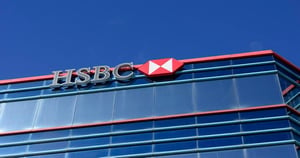Walgreens Boots Alliance, Inc. (NASDAQ: WBA) stands as a prominent player in the healthcare and pharmaceutical retail sector, with a market capitalization of $9.78 billion. As a global entity, Walgreens operates extensively across the United States, the United Kingdom, and various international markets under renowned brands like Boots, Benavides, and Ahumada. However, recent financial indicators suggest that the company is navigating a complex landscape, marked by both challenges and opportunities that are crucial for investors to consider.
**Current Price and Market Performance**
As of the latest trading session, WBA’s stock is priced at $11.31, experiencing a minor dip of 0.08%, which is relatively stable given the volatile nature of the market. The stock’s 52-week range spans from $8.24 to $15.91, indicating significant price fluctuations over the past year. Current technical indicators, such as the 50-day and 200-day moving averages at $11.13 and $10.22 respectively, along with a notably low RSI of 16.85, suggest the stock is in oversold territory, which may pique the interest of value investors looking for potential entry points.
**Valuation and Financial Metrics**
Walgreens Boots Alliance does not currently provide a trailing P/E ratio, which indicates that the company has not reported positive earnings in the recent past. However, the forward P/E ratio stands at a modest 7.49, suggesting that analysts anticipate improved earnings in the near future. The absence of PEG, Price/Book, Price/Sales, and EV/EBITDA ratios limits a comprehensive valuation analysis, yet the company’s ability to generate substantial free cash flow of approximately $3.67 billion is a positive sign of financial health and operational efficiency.
**Dividend Yield: A Double-Edged Sword**
One of the standout features of WBA’s financials is its attractive dividend yield of 8.84%, which is significantly higher than industry averages. This yield may appeal to income-focused investors seeking reliable dividend payments. However, the sustainability of this dividend is questionable, given a high payout ratio of 290.91%, which indicates that the company is distributing more in dividends than its net income. This could pose risks to the dividend’s future viability unless earnings improve.
**Analyst Ratings and Potential Upside**
The analyst community presents a cautious outlook for WBA, with 2 buy ratings, 11 hold ratings, and 1 sell rating. The average target price is $12.41, implying a potential upside of 9.76% from the current price level. The target price range varies from $10.00 to $19.21, reflecting differing opinions on the company’s growth prospects and market conditions.
**Operational Segments and Strategic Initiatives**
Walgreens Boots Alliance’s operations span three key segments: U.S. Retail Pharmacy, International, and U.S. Healthcare. The U.S. Retail Pharmacy segment, which includes health and wellness services, remains a cornerstone of the company’s revenue generation. Meanwhile, the International segment leverages the strength of the Boots brand to deliver value across Europe and Latin America. Additionally, the U.S. Healthcare segment, which includes VillageMD and Shields, underscores Walgreens’ commitment to expanding its footprint in value-based care and specialty pharmacy services.
**Investor Considerations**
For investors, Walgreens Boots Alliance presents a mixed bag of opportunities and risks. The high dividend yield, while appealing, comes with the caveat of sustainability concerns. The company’s strategic initiatives in healthcare and international markets demonstrate potential for long-term growth, yet immediate challenges, such as negative earnings per share of -$6.69 and a return on equity of -66.21%, highlight the hurdles Walgreens must overcome.
Individual investors considering WBA should weigh these factors carefully, assessing whether the potential upside aligns with their risk tolerance and investment objectives. As Walgreens navigates this intricate landscape, its future performance will hinge on executing strategic initiatives effectively and stabilizing its financial metrics.




































